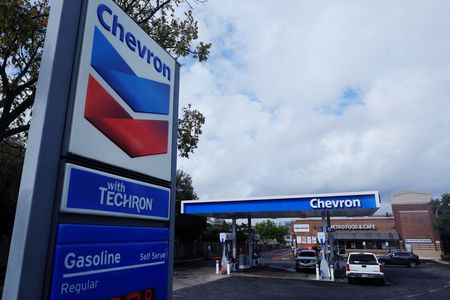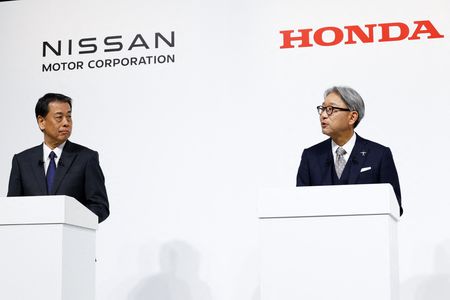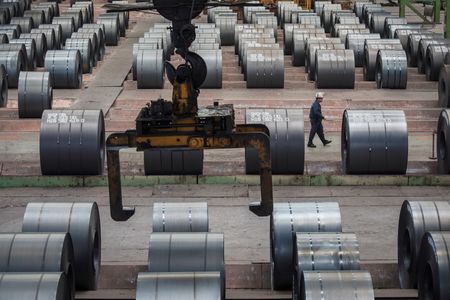By Ernest Scheyder and Sheila Dang
HOUSTON (Reuters) -Chevron will lay off 15% to 20% of its global workforce by the end of 2026, the U.S. oil company said on Wednesday as it seeks to cut costs, simplify its business, and complete a major acquisition.
The No. 2 U.S. oil producer has faced production challenges including cost overruns and delays in a large Kazakhstan oilfield project.
Meanwhile, its $53-billion deal to acquire oil producer Hess and gain a foothold in Guyana’s lucrative oilfield is in limbo due to a court battle with larger rival Exxon Mobil, which has outperformed it with production growth, achieving record production in Guyana and the biggest oilfield in the United States.
Chevron has said it is targeting up to $3 billion in cost cuts through 2026 from leveraging technology, asset sales and changing how and where work is performed.
At the end of 2023, Chevron employed 40,212 people across its operations. A layoff of 20% of total employees would be about 8,000 people. Those figures exclude another roughly 5,400 employees of Chevron service stations.
Weak margins in the production of gasoline and diesel also hurt Chevron’s fourth quarter earnings, as its refining business posted a loss for the first time since 2020, raising pressure on CEO Mike Wirth.
Shares of Chevron declined 1.3% in afternoon trading. The broader S&P 500 Energy Sector index fell 2.4%. Chevron’s shares are up 5.6% year-to-date.
“Chevron is taking action to simplify our organizational structure, execute faster and more effectively, and position the company for stronger long-term competitiveness,” said Mark Nelson, vice chairman of Chevron, in a statement. “We do not take these actions lightly and will support our employees through the transition.”
The company told employees during an internal town hall that they can begin opting for buyouts now through April or May, according to a source familiar with the matter.
Chevron will reorganize its business and announce a new leadership structure in the next two weeks, the source said.
The oil industry has been consolidating in recent years, focusing on mergers and operational efficiency more than drilling new wells.
Exxon, the No. 1 U.S. oil company, bought Pioneer Natural Resources last year to become the largest producer in the Permian Basin. Exxon also has the largest stake in a Guyana oil joint venture that has discovered more than 11 billion barrels of oil.
If Chevron fails to close the Hess acquisition, it would be the second deal to slip through Wirth’s fingers. In 2019, Chevron abandoned its bid to buy Anadarko Petroleum Corp after Occidental Petroleum raised its offer.
The company’s oil and gas reserves have declined to their lowest point in at least a decade, further raising concerns about Chevron’s long-term prospects without Hess.
Chevron moved its headquarters from San Ramon, California to Houston last year and replaced several long-standing managers to renew its leadership.
Last year, it also announced a new hub in India that will be its largest tech center outside the United States.
(Reporting by Ernest Scheyder and Sheila Dang in Houston; Editing by Peter Henderson, Franklin Paul and Alistair Bell)










